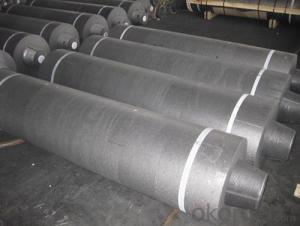When it comes to the world of metallurgy and various other industries that require high levels of heat and resistance, graphite electrodes play a crucial role. But, have you ever wondered what makes one type of graphite electrode stand out from the other? Today, we’re diving into the fascinating differences between UHP (Ultra-High Power) and HP (High Power) graphite electrodes. Strap in, because this is going to be a wild ride through the graphite wonderland!
First things first, let’s talk about the basics. Graphite electrodes are essentially long, cylindrical rods made from pure graphite, designed to conduct electricity and resist heat. They’re the unsung heroes in processes like electric arc furnaces (EAFs), ladle furnaces, and even in the production of silicon and yellow phosphorus. But, just like how not all superheroes wear capes, not all graphite electrodes are created equal.
Now, let’s cut to the chase and get into the nitty-gritty of what sets UHP and HP electrodes apart. The primary difference lies in their grade of purity. UHP electrodes boast an impressive purity level of over 99.95%, while HP electrodes hover around the 98-99% mark. Don’t be fooled by the small percentage points; this difference in purity is a game-changer in terms of performance.
With that higher purity level, UHP electrodes can handle more extreme temperatures and offer better electrical conductivity. This means they’re perfect for large-scale industrial applications where high efficiency and minimal downtime are crucial. Imagine a superhero with an indestructible suit and the ability to run at lightning speed – that’s UHP for you!
On the other hand, HP electrodes, while not as supercharged as their UHP counterparts, still pack a punch. They’re more affordable and offer a good balance between performance and cost. If you’re working on a smaller scale or have a tighter budget, HP electrodes might just be the right fit for you. Think of them as the reliable sidekicks that get the job done without breaking the bank.
But here’s where things get interesting – the applications. UHP electrodes are like the A-list celebrities of the graphite world. They’re often found in the company of electric arc furnaces for steel production, where they shine in their ability to produce high-quality steel with less energy consumption. They’re also popular in the silicon metal industry, where their high purity ensures a cleaner end product.
HP electrodes, however, are more like the versatile supporting actors. They’re used in a variety of applications, including smaller EAFs, ladle furnaces, and even in some non-ferrous metal melting processes. They’re the go-to choice when you need a dependable electrode that won’t let you down, even if it’s not the star of the show.
Now, let’s talk about the environment. Both UHP and HP electrodes are environmentally friendly, but UHP electrodes take the cake with their lower consumption rates and reduced emissions. They’re like the eco-warriors of the graphite world, fighting for a cleaner and greener future.
And let’s not forget about the operational efficiency. UHP electrodes, with their superior conductivity and heat resistance, contribute to a smoother and more efficient operation. This means less maintenance, fewer replacements, and ultimately, a longer lifespan. It’s like having a superhero with regenerative powers – they just keep going and going!
But what about the cost? We all know that with great power comes a great price tag, and UHP electrodes are no exception. They’re more expensive than HP electrodes, but the long-term benefits and efficiency gains make them a worthy investment. It’s like buying a high-end sports car – sure, it costs more upfront, but the performance and prestige are worth every penny.
So, which one should you choose? It all depends on your specific needs and circumstances. If you’re looking for top-notch performance and don’t mind the higher price tag, UHP electrodes are your best bet. But if you’re working with a budget and still want a reliable electrode, HP electrodes are a solid choice.
In conclusion, the choice between UHP and HP graphite electrodes is like choosing between your favorite superheroes. Some might prefer the indestructible and lightning-fast UHP, while others might find comfort in the dependable and budget-friendly HP. Ultimately, it’s about finding the right balance between performance, cost, and efficiency that suits your unique situation. So, go ahead and choose your graphite electrode superhero – the world of metallurgy and beyond awaits!

